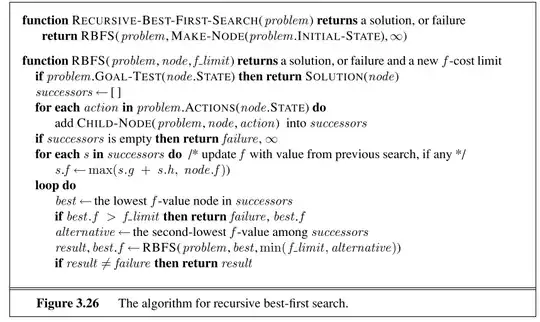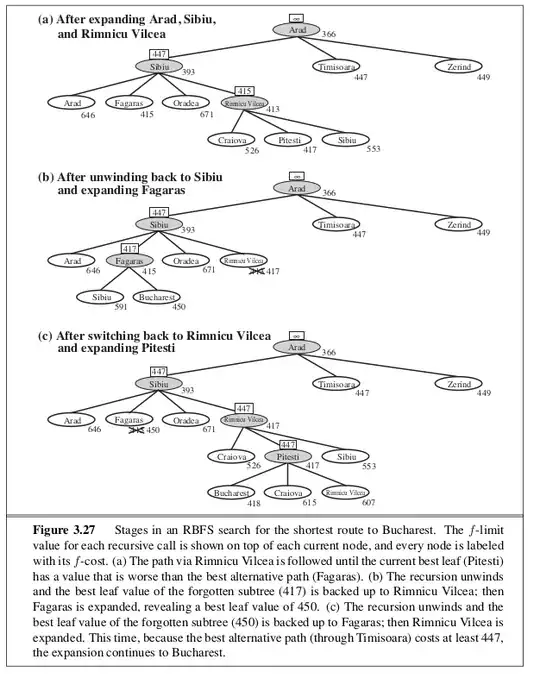This is probably more easily understood as the collapse/restore macro. The idea is that the previously explored state was collapsed and only the minimum f-cost from the sub-tree was stored. This represents the best unexpanded state in the subtree that was collapsed.
When restoring the portion of the collapsed tree, the f-cost of the restored node could either be the original f-cost (g+h), or it could be the stored f-cost if it is larger. By taking the max, the code ensures that states that are restored maintain at least the cost of the previously best unexpanded state. (If the g+h cost is larger, then we know the state wasn't previously expanded and it wasn't previously the state on the fringe with the minimum edge cost.)
The linked paper gives several examples where similar ideas are used during search.

